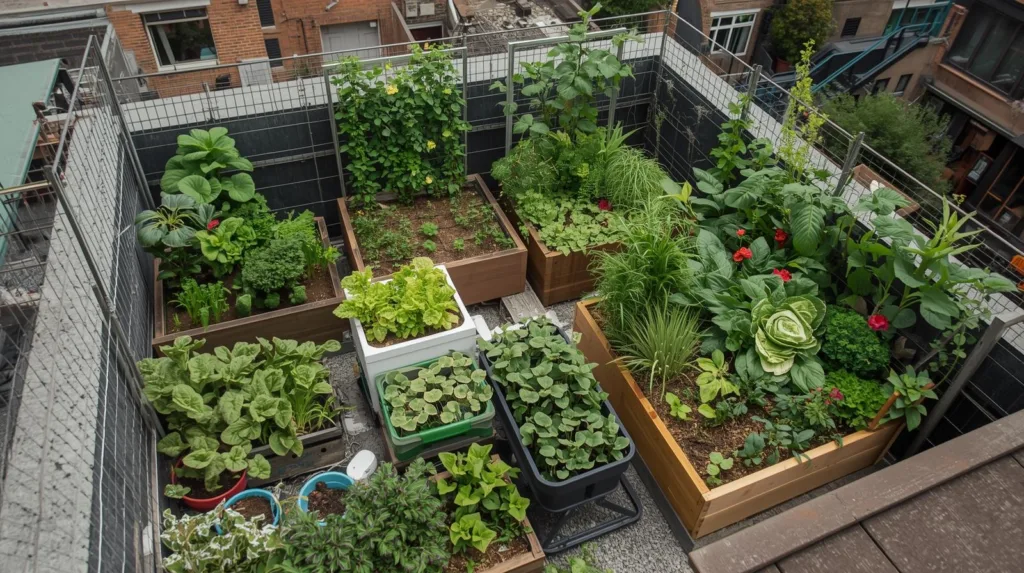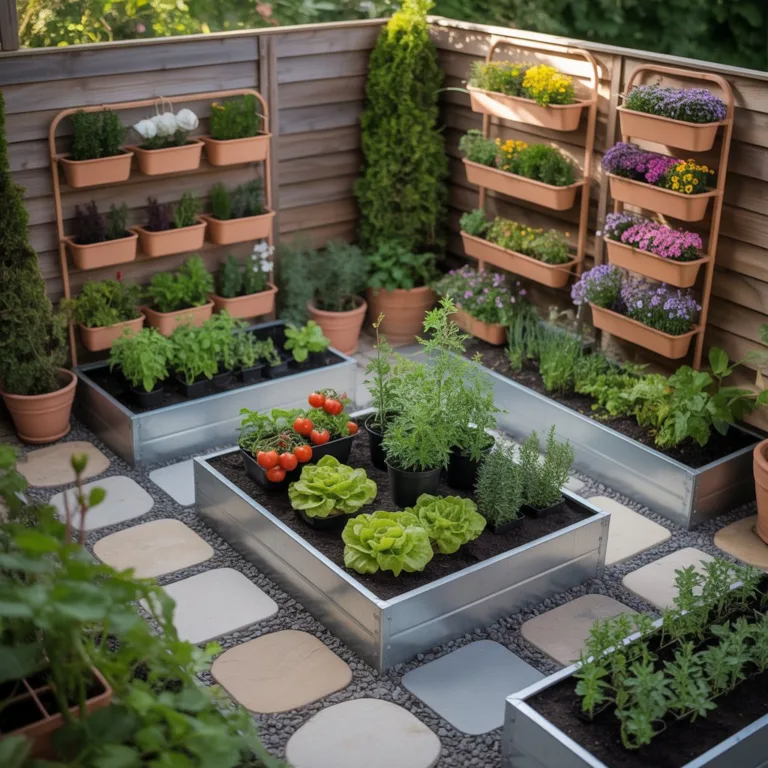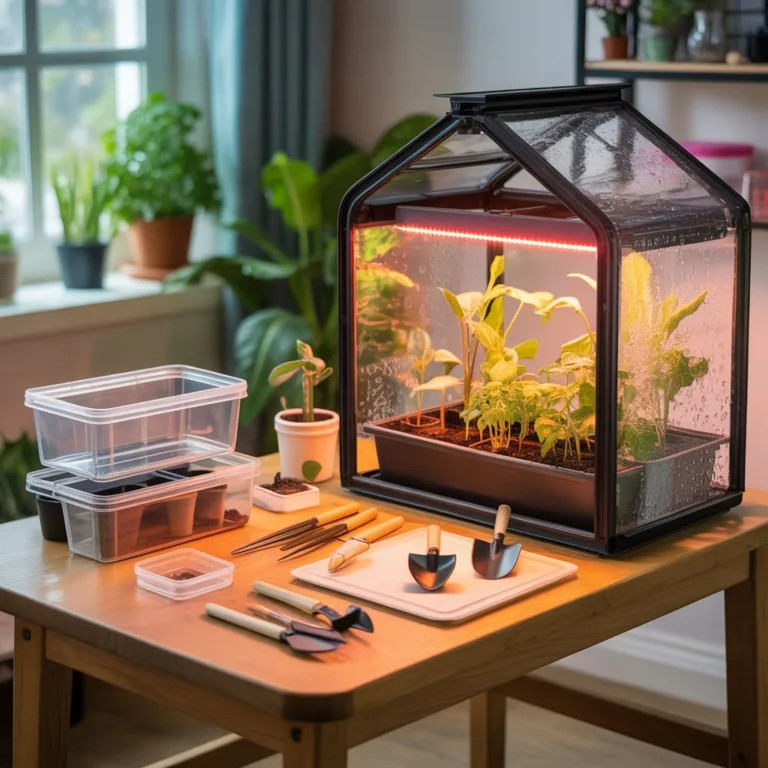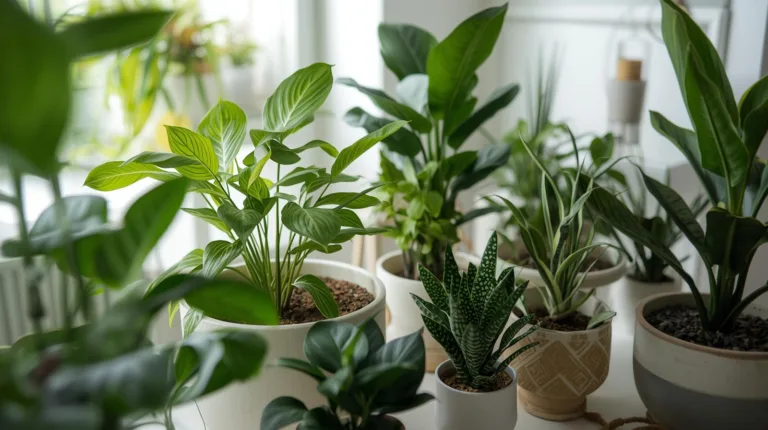Living in a bustling city often means sacrificing space, peace, and a patch of green. Yet, amid the concrete and constant movement, more and more people are finding creative ways to reconnect with nature — even in the smallest apartments or balconies. Compact vegetable gardens for city dwellers have become a growing trend, combining sustainability, self-sufficiency, and well-being. They are not only about growing food but also about cultivating a healthier lifestyle and a deeper relationship with the environment.

This guide dives into everything you need to know about starting and maintaining a compact vegetable garden in the city. From choosing the right containers and crops to making the most of limited sunlight, you’ll discover how even a few square feet can produce an impressive harvest.
The Rise of Urban Gardening
Urban gardening has transformed from a niche hobby into a global movement. The motivation is clear: people want fresh, chemical-free food and the satisfaction of growing it themselves. For many, it’s a response to the fast pace and disconnection of city life. Compact vegetable gardens for city dwellers aren’t just about convenience — they’re about sustainability, creativity, and balance.
In dense urban areas where backyards are rare, rooftops, balconies, and even windowsills become fertile ground. Modern container systems, vertical gardening techniques, and hydroponic setups make it easier than ever for urban residents to transform small areas into thriving green spaces.
Why Compact Vegetable Gardens Are Perfect for City Dwellers
The appeal of compact vegetable gardens lies in their adaptability. Whether you live in a studio apartment or have a small patio, it’s possible to cultivate a surprising variety of vegetables and herbs.
1. Efficient use of space – You can grow food vertically, on shelves, walls, or railing planters.
2. Control over your food – You know exactly what goes into your soil and onto your plate.
3. Stress reduction – Gardening offers mindfulness benefits, helping reduce anxiety and improve mental clarity.
4. Sustainable living – Growing your own vegetables cuts down on packaging waste and transport emissions.
5. Cost savings – Over time, a small garden can provide a steady supply of fresh produce at a fraction of store prices.
Choosing the Right Space for Your Garden
Finding the perfect spot is the foundation of every successful compact garden. Light, temperature, and airflow all influence plant health.
Balconies and patios are ideal for sun-loving crops like tomatoes, peppers, and herbs. If your space receives less sunlight, leafy greens such as lettuce, spinach, and kale are excellent alternatives.
Windowsills work well for smaller herbs like basil, chives, or parsley, especially if they get 4–6 hours of sunlight daily.
Rooftops are increasingly being used in apartment complexes and offices for communal gardens. They typically offer abundant light and airflow, but you must ensure adequate weight support and protection from wind.
Indoor setups are perfect for people without outdoor space. With the help of LED grow lights and compact hydroponic kits, you can grow vegetables year-round, regardless of weather.
Choosing the Right Containers
Container gardening is at the heart of urban food growing. The choice of container affects plant health, growth, and yield.
- Terracotta pots are breathable and classic, though they dry out faster.
- Plastic containers are lightweight, durable, and retain moisture better.
- Fabric grow bags encourage air pruning of roots and prevent overwatering.
- Recycled items, such as buckets, wooden crates, or even old bathtubs, can be repurposed into charming, eco-friendly planters.
Make sure containers have drainage holes to prevent waterlogging, and use light, well-aerated soil enriched with compost.
The Best Vegetables for Compact Gardens
Certain vegetables thrive in confined spaces and produce high yields in small containers. Choosing the right crops is key to maximizing productivity.
1. Leafy greens
Lettuce, kale, spinach, and arugula grow quickly, tolerate partial shade, and can be harvested multiple times.
2. Herbs
Basil, cilantro, parsley, thyme, and mint are compact, fragrant, and enhance almost any meal.
3. Root vegetables
Radishes, carrots, and beets can be grown in deeper containers and don’t need much horizontal room.
4. Tomatoes and peppers
These sun-loving crops thrive in larger pots and can yield for months with proper care. Cherry tomato varieties are especially suited for small spaces.
5. Climbing plants
Beans and peas grow vertically on trellises, saving ground space while producing abundant harvests.
6. Microgreens
For ultra-compact gardening, microgreens are ideal. They’re fast-growing, nutrient-dense, and require minimal maintenance.
Maximizing Vertical Space
When floor space is limited, vertical gardening becomes a game-changer.
Wall planters, hanging pots, and vertical racks can transform unused walls into productive green zones. You can create a simple DIY setup using wooden pallets or modular shelving.
Trellises and nets are perfect for supporting climbing plants like cucumbers or pole beans.
Hanging baskets are excellent for strawberries, cherry tomatoes, and cascading herbs such as thyme or oregano.
If you’re indoors, use tiered shelving near windows or under grow lights to make the most of every inch of space.
Light and Water: Balancing the Essentials
Sunlight and water are the lifeblood of your compact garden.
Most vegetables need at least six hours of sunlight per day. If your space doesn’t get enough natural light, consider full-spectrum LED grow lights. They replicate sunlight and are energy-efficient.
Watering requires a delicate balance — too much causes root rot, too little leads to stunted growth. Use self-watering pots, drip irrigation systems, or even simple wicking setups to maintain consistent moisture levels.
A general rule: water when the top inch of soil feels dry. In hot urban environments, plants in containers may need daily watering.
Composting in the City
Even small spaces can support composting. By turning food scraps into organic fertilizer, you create a closed-loop system that reduces waste and improves soil health.
Worm bins (vermicomposting) are perfect for apartments. Worms convert organic waste into nutrient-rich compost without odor when properly maintained.
Alternatively, bokashi composting ferments waste using microorganisms, making it a low-odor and compact option for indoor use.
Adding homemade compost to your garden soil improves structure, moisture retention, and nutrient availability, making plants healthier and more resilient.
Dealing with Urban Challenges
Urban gardeners face unique challenges — limited light, air pollution, and pests are common concerns.
Pollution: Choose hardy plants and wash produce thoroughly. Using mulches or covers can also minimize dust accumulation.
Limited sunlight: Grow shade-tolerant plants or use reflective surfaces (like mirrors or light-colored walls) to boost light exposure.
Pests: Companion planting helps naturally deter insects. For instance, basil repels mosquitoes and flies, while marigolds discourage aphids. Neem oil sprays are an eco-friendly solution for pest management.
Wind exposure: Use windbreaks like bamboo screens or mesh to protect delicate plants.
Creating a Sustainable Gardening Routine
Sustainability in compact gardening means minimizing waste, conserving resources, and working harmoniously with nature.
- Collect rainwater using small barrels or containers for irrigation.
- Reuse kitchen scraps as fertilizer or compost.
- Avoid chemical pesticides — use natural deterrents like garlic spray or insecticidal soap.
- Rotate crops seasonally to maintain soil health.
- Reuse containers and tools rather than buying new ones.
Over time, your small garden becomes a micro-ecosystem, supporting pollinators and enriching urban biodiversity.
Adding Beauty and Function
Compact vegetable gardens don’t have to be purely functional — they can also beautify your space. Combining vegetables with flowering plants creates a visually pleasing and pollinator-friendly environment.
Mix colorful lettuces, edible flowers like nasturtiums, and herbs with distinct textures. Vertical arrangements can double as natural privacy screens or green walls that insulate against noise and heat.
Lighting adds another layer of charm. Solar-powered lights or small string lights can turn your garden into a cozy evening retreat.
Community and Urban Gardening Initiatives
Many city dwellers are joining community gardens, which combine shared spaces, tools, and knowledge. These spaces foster connection, education, and food security.
If you don’t have space at home, consider renting a plot or volunteering in one. Many neighborhoods also offer rooftop or courtyard gardening projects that allow residents to share the harvest and responsibility.
Participating in such projects not only provides access to fresh food but also strengthens community bonds and promotes eco-conscious living.
The Joy of Harvesting
There’s something deeply satisfying about harvesting your own vegetables — a tangible reward for patience and care. Whether it’s a handful of cherry tomatoes or a bowl of lettuce, these small victories connect us to the rhythm of nature in an otherwise mechanical urban life.
By observing your plants grow, you learn resilience, adaptability, and appreciation for the living world. Compact vegetable gardens remind us that sustainability begins with small actions — even a single pot on a balcony can make a difference.
Sustainable Gardening for the Future
Urban gardens may seem small, but their impact is powerful. When multiplied across cities, they transform rooftops, walls, and windows into productive, green spaces. They help reduce heat, improve air quality, and promote biodiversity.
As more city dwellers embrace compact vegetable gardens, urban landscapes evolve into greener, healthier places to live. The act of growing food — even on a small scale — becomes a form of quiet activism for the planet.
City living doesn’t have to mean living without nature. With creativity, patience, and a touch of green ambition, anyone can cultivate abundance in limited spaces. Start small, experiment, and watch how a few pots of herbs or a vertical garden can turn your apartment into a vibrant oasis.
Your balcony, rooftop, or windowsill can be more than just a view — it can be a thriving, sustainable source of nourishment and peace.

Sofia Greenfield is a sustainable gardening expert and environmental educator who inspires families and urban gardeners to cultivate green spaces responsibly. She shares practical tips on growing vegetables, herbs, and flowers using eco-friendly and recycled materials, emphasizing the joy of gardening while protecting the planet.



